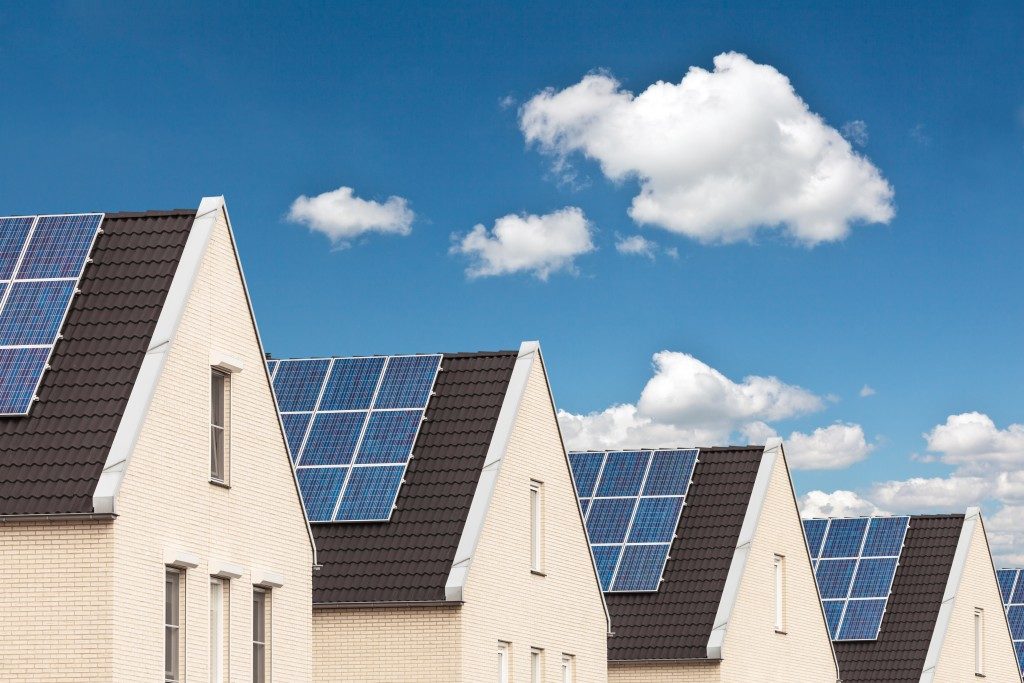There are no shortcuts in solving Utah’s particulate problem. Inversion will always be a factor, so limiting emissions is the only way to minimize particulates and pollution. Legislating laws will do very little as organic change is needed to solve the problem.
Solar-powered Homes
At this day and age, solar panels are practically free. You’ll need a 7-kW system to power your whole house — maybe 4-kW if you’re a retiree and the kids are away. These systems can produce more than enough electricity to cover your home’s energy needs, adding credits to your electricity bill for when the winter comes. A decent solar energy system from a reputable company can cost around $10,000-$15000 (minus 30 percent through the Federal Solar Tax Credit system) and will last for 25-35 years. You might think that shelling out 10-15k (7k-12k with the solar credits) on solar panels might be a bit expensive, but you’re already paying around $1,200 a year for electricity. Put the money you’re spending on electricity towards your solar panels, and you can be done paying in 10 years. However, you’ll still get 15-25 more years of free power, which counts for an additional $12,000-$18,000 in savings. Free electricity is excellent, but you can make it greater with…
Electric Vehicles
 No fumes, no particulates — electric vehicles should be perfect for Utah roads. However, their reliance on a coal-powered grid makes them polluters, albeit indirectly. A solar-powered home can somewhat solve this problem, and you’ll also be saving on fuel costs. Modern electric vehicles are besting cars in every category except mileage. Unless you drive more than 100 miles a day, you probably won’t need to charge your vehicle until you get back home. If you plan on driving for more than a hundred miles or forgot to charge, there are hundreds of EV charging stations in Utah, with more and more being built each year.
No fumes, no particulates — electric vehicles should be perfect for Utah roads. However, their reliance on a coal-powered grid makes them polluters, albeit indirectly. A solar-powered home can somewhat solve this problem, and you’ll also be saving on fuel costs. Modern electric vehicles are besting cars in every category except mileage. Unless you drive more than 100 miles a day, you probably won’t need to charge your vehicle until you get back home. If you plan on driving for more than a hundred miles or forgot to charge, there are hundreds of EV charging stations in Utah, with more and more being built each year.
Nuclear Power
The only energy source that is both clean and reliable is nuclear power, and it might be coming to Utah in just a few years. The state already approved a partnership with the NuScale Power in what they call the Carbon Free Power Project. The power plant will be built in Idaho, but it will provide electricity to several Utah cities. This will decrease the state’s reliance on coal, but more plants will need to be built to eliminate it. Unlike how it is portrayed in the media or by environmental activists, nuclear power is quite safe. Even Patrick Moore, a founder and former president of Greenpeace Canada, has switched his stance on nuclear power. Modern atomic plants are cleaner and more reliable than the ones from decades ago. Meltdowns are a thing of the past, and close to zero radiation is emitted. A year’s worth of radiation from a nuclear plant will correspond to a few hours of walking in the sun in Park City.
Solar power is practically free and with an electric vehicle — so is fuel. However, you’ll still need a reliable source of energy at night, and that’s where nuclear power comes in.









